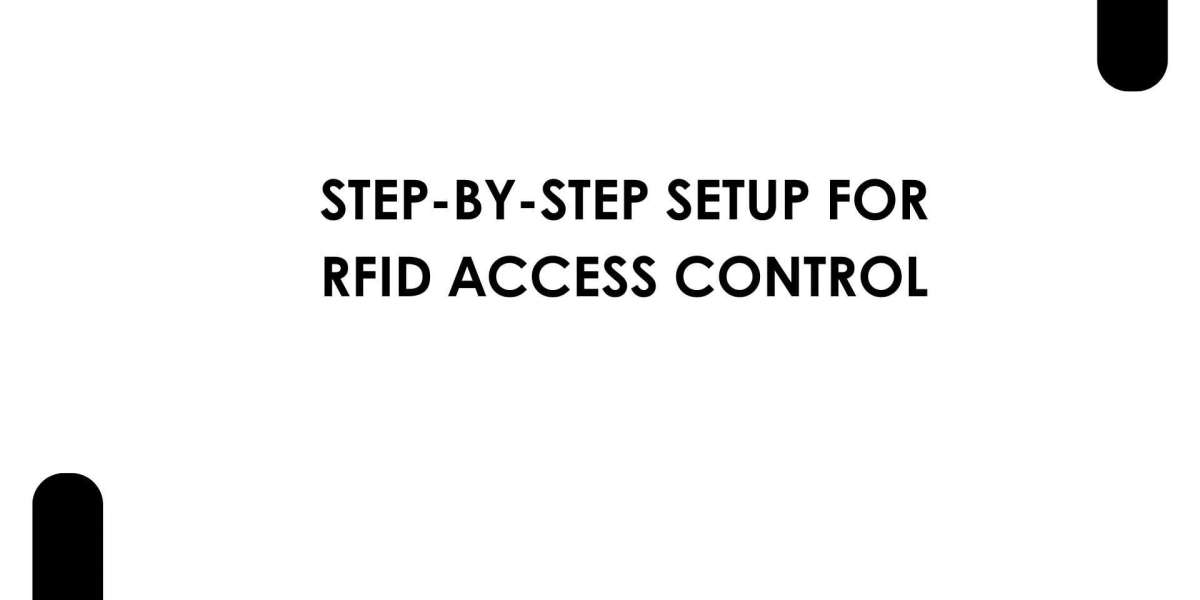As buildings become smarter and security demands increase, more organizations are turning to RFID-based systems to manage entry points. RFID or Radio Frequency Identification technology is a proven solution for secure, contactless, and efficient access control. It offers quick authentication and can be scaled easily across offices, warehouses, residential complexes, and institutions.
At XTEN-AV, we help AV professionals and integrators streamline the design and deployment of access solutions with precision and speed. Whether you are building a new facility or upgrading an existing one, setting up an RFID Access Control System requires careful planning and proper execution.
In this blog, we will walk you through a detailed step-by-step guide to help you set up an RFID access control system from start to finish.
What Is RFID Access Control
RFID access control uses radio frequency signals to identify and authenticate users without physical contact. An RFID reader communicates with a tag or card to verify access rights. These tags can be embedded in cards, key fobs, or even mobile phones.
RFID is preferred for its speed, ease of use, and ability to manage large volumes of users. It is commonly used in office buildings, educational campuses, and industrial facilities where quick and secure access is essential.
Step 1: Assess Your Security Needs
Before installing any hardware, start with a full site assessment.
Identify entry and exit points that need RFID access.
Determine who needs access and at what times.
Decide whether access should be role-based or individualized.
Consider if you need integration with video surveillance or alarms.
This step ensures your system is tailored to your specific environment and user groups.
Step 2: Choose the Right Components
An RFID access control system includes several core components:
RFID Readers – Devices installed at doors or gates to read RFID tags.
RFID Tags or Cards – Issued to users, these contain unique identifiers.
Access Control Panel – The central unit that makes the access decision.
Software Interface – Allows administrators to manage users, permissions, and logs.
Door Locks or Electric Strikes – Mechanisms that lock or unlock when access is granted.
Power Supply and Backup – Ensures consistent performance, even during outages.
Choose hardware that matches your security level and installation type, whether it is indoor, outdoor, or high-traffic.
Step 3: Plan the System Layout
Once your components are selected, map out the full layout of your system.
Determine placement of readers at doors or gates.
Identify control panel location with access to power and network.
Plan cable runs or wireless configurations.
Ensure proper wiring for door locks and power sources.
Use XTEN-AV's system design tools to create detailed wiring diagrams and layout plans to simplify the installation process.
Step 4: Install the Hardware
Install RFID Readers
Mount readers at a convenient height near doorways, typically between 36 and 48 inches from the ground. Make sure the reader is weatherproof if used outdoors.
Install Door Locks
Electric strikes or magnetic locks should be installed in the doorframe. Connect them to the control panel and test their function with manual triggers before integration.
Mount the Control Panel
The control panel is typically installed in a secure location, such as a network room or electrical closet. It should have stable power, internet access, and protection from tampering.
Wire the Components
Connect the readers, locks, and power supply to the control panel using appropriate cabling. Follow manufacturer guidelines for voltage and polarity.
Step 5: Configure the Access Control Software
The software is the brain of your RFID Access Control System. This is where you:
Create user profiles and assign access credentials.
Set access schedules based on time, location, or user role.
Monitor entry logs and generate security reports.
Customize alerts and system responses to unauthorized access attempts.
Make sure the software interface is secured with admin credentials and supports remote access if necessary.
Step 6: Program RFID Cards or Tags
Each RFID card or tag must be uniquely programmed to work with your system.
Use an RFID encoder to register the tag in the system database.
Assign the tag to a specific user or group.
Define where and when that user has access.
Test the programmed tag on relevant readers.
Many systems also support mobile RFID credentials, which allow users to use their smartphones instead of physical tags.
Step 7: Test the System Thoroughly
Before going live, conduct a full test of the system:
Check each door reader for correct tag response.
Verify that users only access authorized areas.
Test emergency features like manual override or lockdown mode.
Simulate a power outage to ensure backup systems work.
Document any issues and resolve them before system deployment.
Step 8: Train Users and Administrators
Training is key to long-term success.
Train administrators on how to add and remove users, set permissions, and review logs.
Instruct users on how to use their RFID credentials properly.
Share procedures for reporting lost tags or denied access issues.
Providing user guides and quick-reference materials can help reduce confusion and support calls.
Step 9: Maintain and Monitor the System
Once installed, the system must be maintained regularly.
Perform periodic software updates.
Replace damaged tags or hardware.
Review access logs for unusual activity.
Test backup batteries and fail-safes monthly.
Some RFID systems also offer cloud-based monitoring for easier remote management and updates.
Conclusion
Setting up an RFID Access Control System is a smart investment for any facility looking to improve security, efficiency, and user experience. By following a structured step-by-step approach, you ensure a smooth installation and long-term reliability.
With tools from XTEN-AV, AV professionals and integrators can design accurate layouts, choose the right hardware, and streamline project documentation. Whether for small offices or large campuses, RFID access offers a flexible and secure solution to control who goes where and when.
Make your entrances smarter and safer with RFID technology. It all starts with the right plan, the right tools, and the right partner.
Read more: https://indibloghub.com/post/how-to-create-a-wiring-diagram-for-your-access-control-system-design








